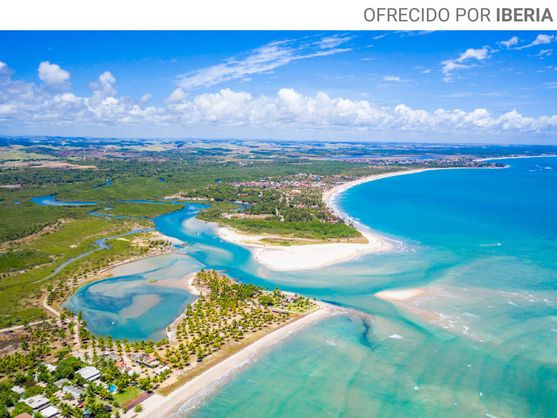
Air travel between Spain and South America’s largest country is reaching a new level. By the end of 2025 and the beginning of 2026, Spain’s flagship carrier Iberia will significantly strengthen its presence on the Brazilian route by adding two entirely new destinations to its existing routes to Rio de Janeiro and São Paulo. Travelers will now be able to fly directly to Recife and Fortaleza, opening up the rich and vibrant northeast of the country, which until now was mostly accessible via connecting flights. This strategic move not only shortens travel time, but also brings Brazil’s culture and nature much closer to Europeans.
The unexplored northeast
Recife, often called the “Brazilian Venice” due to its abundance of rivers, canals, and bridges, is a fascinating blend of colonial heritage and vibrant modernity. A logical starting point for exploring the city is Marco Zero Square, from which the main streets radiate, including the famous Rua do Bom Jesus with its colorful façades and lively atmosphere. Recife is also a major cultural hub: the Ricardo Brennand Institute, known for its impressive collection of art and weaponry, and the workshop of ceramicist Francisco Brennand, where giant sculptures inhabit an almost mystical space, are must-visits to truly understand the spirit of the region. Just an hour away lies Porto de Galinhas, a destination famous for its natural pools among coral reefs and turquoise waters. For a deeper dive into history, head to the nearby town of Olinda, a UNESCO World Heritage Site, with its cobbled streets and panoramic views over the Atlantic.
The capital of Ceará, Fortaleza, has become a favorite destination for those seeking a blend of sun, ocean, and vibrant city life. The main hotspot here is Iracema Beach, buzzing with activity day and night. Stemming from here is the Beira-Mar promenade, lined with a craft market and countless bars. Another iconic spot is Praia do Futuro, famous for its open spaces and beachfront restaurants known as “barracas,” serving the freshest seafood with live music. But the city offers more than just beaches. The Dragão do Mar cultural center boasts museums, cinemas, and concert venues with a rich program of events. Adventure seekers can head beyond the city to Jericoacoara or Canoa Quebrada—coastal villages set among dunes, cliffs, and crystal-clear waters. Round off your experience with an exhilarating buggy ride across the sandy dunes.
Classic routes with a new twist
Rio de Janeiro remains the iconic symbol of the country. The view over the city from the Christ the Redeemer statue on Corcovado Mountain or from the top of Sugarloaf Mountain, especially at sunset, offers unforgettable emotions. Life here thrives on the legendary beaches of Copacabana and Ipanema, where there is always space for a game of football, a break at a kiosk with refreshing drinks, or a leisurely stroll along the ocean. The city transforms each February, when the Carnival turns the entire metropolis into a whirlwind of music and dance. Yet Rio is multi-faceted. Away from the bustle, tranquility can be found in the Botanical Garden or at Lage Park, with its historic mansion. The bohemian neighborhood of Santa Teresa, with its artists’ studios and the famous Selarón Steps, laid with tiles from around the world, reveals the city’s creative spirit. Guided tours to communities like Rocinha showcase social projects that are changing people’s lives.
If Rio is Brazil’s postcard, São Paulo is its tireless engine—a business and cultural powerhouse. Life here moves to the hectic rhythm of a metropolis of more than 20 million people. The city’s main artery is Avenida Paulista, home to financial institutions, shops, and cultural centers including the São Paulo Museum of Art (MASP). To delve into the city’s history, visit the Municipal Market to try the famous mortadella sandwich, and explore the Cathedral and the Monastery of San Bento. Ibirapuera Park, designed by Oscar Niemeyer, offers an oasis of tranquility. The city’s multicultural spirit is on display in the Liberdade district, a slice of Japan at the heart of Brazil.
Strategy and new opportunities
The route network expansion coincides with a landmark anniversary—the 75th year since Iberia’s first flight to Rio de Janeiro. The airline plans to serve new destinations, as well as some existing ones, with modern and more eco-friendly Airbus A321XLR aircraft. This move will increase the number of seats on Brazilian routes by 27% compared to 2024. Thanks to these innovations, exploring the vibrant and diverse South American country will become much easier and more convenient.






